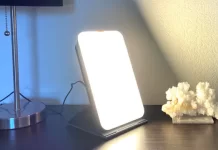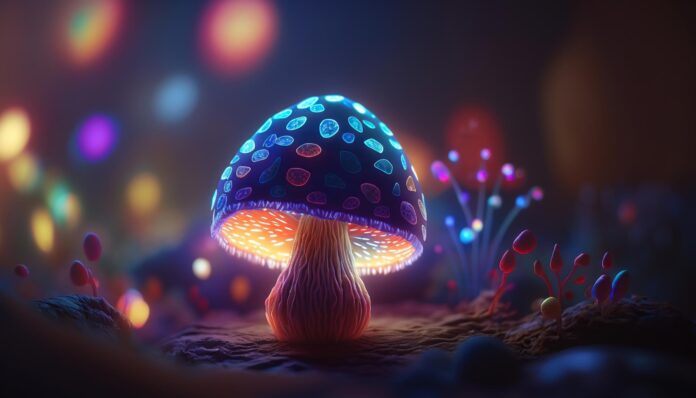A lot of people are looking for methods to improve their lives and feel better and happier. Some are experimenting with microdosing in light of this. The practice of taking small doses of illegal hallucinogenic drugs is known as microdosing. Microdosing is seen by some to have the potential to improve mood and creativity.
The media is paying close attention to microdosing. However, the truth is that not enough data has been gathered to determine whether or not microdosing is safe or helpful. In addition, psychedelics are still forbidden in the US. Continue reading to learn more about microdosing and the current state of the science behind it.
What is microdosing?
The process of taking a small dose of a psychedelic substance, such as LSD or psilocybin, on a predetermined schedule is known as microdosing. It is no longer illegal to possess or use these drugs in a number of American cities where they have been decriminalized. The truth is that it is still unlawful to use or possess any kind of psychedelic in the United States.
Microdosing proponents claim that the approach improves wellbeing and mood. However, scientists and medical professionals are still not persuaded.
There is currently insufficient proof to conclude that microdosing improves either physical or mental health. Of course, when additional research is conducted in the upcoming years, this could change.
How much is a microdose?
A microdose is typically defined by researchers as being 1/10 or 1/20 of a typical recreational dose.
The usual range for psilocybin microdoses is 0.1–0.3 g. The objective is to consume just enough to potentially be beneficial without getting someone wasted or inebriated.
Generally, dried magic mushrooms are ground to a fine powder and then placed into capsules to get a more consistent weight.
What is a normal timetable for microdosing?
People usually stick to a few standard timetables for microdosing. Typical regimens for microdosing consist of:
- There are two days of dosing and two days of non-dosing.
- Dosing every other day
- Dosing is Monday through Friday, with no dosing on weekends.
No single microdosing regimen is superior to another based on any kind of evidence. While it’s not extremely popular, some folks could decide to microdose on a daily basis. This is due to the belief that daily dosing is unnecessary and that microdosing can have a long-lasting effect.
Regular microdosing increases the chance of acquiring a tolerance to the drug. Thus, your body may become accustomed to the repeated microdosing and require larger dosages in order to produce desired results.
What is the duration of a microdose?
A lot of people decide to customise their microdosing schedule in accordance with their findings. Microdosing might last anywhere from one week to two years or longer on average. When they believe they are no longer obtaining the desired impact, most people cease microdosing.
Possible benefits of microdosing
The actual advantages of microdosing remain unclear. Similar to psilocybin-assisted therapy, microdosing may be used to treat mental health conditions such as depression. However, the evidence is still insufficient to make a firm conclusion.
According to certain research, microdosing can provide the following advantages for participants:
- Elevated mood
- Reduced stress
- Enhanced cognitive faculties
- Increased motivation and attention
- Reduced usage of substances
- Heightened awareness of wellbeing
Yet the data is mixed. A lot of the time, the data that supports microdosing relies solely on the symptoms that the user has reported. A few microdosers also claim to have worse moods and increased anxiety.
Additionally, there is evidence that microdosing may be effective in treating cluster headaches and migraines. However, many users view it as a last-resort course of treatment. Likewise, initial studies have indicated a possible advantage of microdosing for ADHD (attention deficit hyperactivity disorder). However, these statements have not yet been supported by any randomized controlled trials.
When using microdosing, a significant placebo effect could occur. This indicates that those who anticipate a benefit from the microdosing appear to experience it most. To differentiate between the placebo effect and the real health advantages of microdosing, more clinical trials are needed. Therefore, additional investigation is undoubtedly required before we can determine with certainty whether microdosing has any advantages at all.
How safe is microdosing?
In general, microdosing is thought to carry a minimal risk of adverse consequences. However, there isn’t enough data from science to determine if microdosing is safe just yet.
The fact that most people are unsure of whether they are receiving the right dose presents one of the main obstacles to microdosing. It can be difficult to gauge the precise amount of a substance you take in a dose, and you may accidentally take more than you meant to. This is also a frequent cause of unfavorable side effects.
Additionally, purchasing, holding, and utilizing these medications may have legal repercussions, which extend to microdosing. Furthermore, you cannot guarantee the strength, availability, or cost of a substance if you obtain it from an unregulated source.
Microdosing – Final Thoughts
To now, there is insufficient data to determine whether microdosing offers any advantages. To determine whether microdosing is beneficial for both physical and mental health, more research is required.
Despite the intriguing appearance of microdosing, remember that psychedelics are prohibited.






























